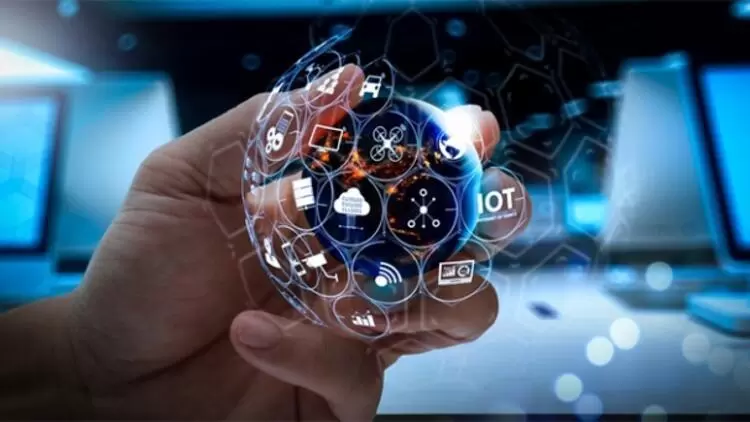80 Common Technology Terms You Must Know
Technology can be stressful. Join our glossary to learn the common terms of the tech world. Keep this guide handy. You will soon be using the term (if you have not already started).
Add-on plugin
Plugins are small programs that can be added to the browser for better performance. One of the most common plugins for plugins is stopping advertising messages on websites.
Browser
A browser is a program that allows you to access web pages Technology. Internet Explorer, Microsoft Edge, Chrome, and Firefox are popular browsers.
Robots bots
Bots, for Internet Robots, are programs designed to automate repetitive tasks. Robots can be as good as intelligence-gathering robots or as bad as malware.
Cloud storage
Cloud storage technology is a way to store files on the Internet instead of on a computer. By placing your files on the Internet, you can access them from anywhere with any device, including a mobile phone.
Context menu
A content menu is a menu that opens in connection with the user, usually activated with a mouse click.
CPU (CPU unit) CPU
The CPU is the brain of the computer. CPU is a chip that runs software and performs calculations.
Desktop desktop
The desktop is the first screen you see after turning on your computer. Usually displays icons, shortcuts, and status bars at the bottom.
Dialog box
The dialog box is a message displayed on the screen and contains a message and a way to enter information, such as a button.
Driver
Drivers Technology are small programs that allow your computer to communicate with hardware such as speakers and printers.
File file
Files are a way to store information directly on a computer. Various information, including text, video, and video, are different types of files. Each file has a name and a format.
File extension file extension
The file format is a way to specify the file type. The file format usually consists of 3 or 4 letters that come after the file name (like file.docx)
Hard Disk Hard Disk
The hard disk drive is the part of the computer responsible for the physical storage of information—a high-speed rotating disk hard disk covered with magnetic material.
Hard Drive
The hard drive is a computer’s long-term memory. The hard drive consists of the hard disk and all the electronic components responsible for reading and writing information to and from the system.
Hardware
Hardware is all the internal and external physical components of a computer. Internal hardware includes CPU, hard drive, RAM power supply, and graphics card. The monitor, keyboard, mouse, camera, and speakers are external hardware north.
Mac MAC
Mac, which stands for Mac, is the Apple version of the PC. It has the same hardware as PCs but has a very different operating system called macOS.
Malware
Malware is a program secretly installed on your system and designed to damage the computer or steal the user’s personal information. Learn how to protect your system from malware.
Operating System
An operating system is a software that manages computer hardware and system resources. A computer will not be used without an operating system. Two of the most common operating systems are Windows and macOS.
Personal Computer
PC is the name given to multipurpose computers running the Windows operating system. These types of systems are usually designed to have only one user.
Phishing Phishing
Phishing is a technique by which hackers send fake emails that are very similar to real emails in which they try to persuade users to disclose their personal information.
RAM (Random Access Memory
RAM is the short-term memory of a computer. It is made of a series of toxic conductor chips and loses all its information when the power is cut off.
Registry
It is a database registry in the Windows operating system that contains the settings of the Windows operating system. When you change some aspects of Windows, those changes are saved in the registry.
Software
Software is a set of instructions for computer use. There is a variety of software from operating systems such as Windows to programs such as WordPerfect and Reviversoft.
Temp files
Temporary or extra files are temporarily created for a specific task, such as data storage, and are added after completing that task. Temporary files are in .temp or .tmp format.
Trojan
Malware is a type of malware that impersonates itself but does something else.
URL Uniform Resource Locator
The URL Technology is the same as the URL but a little more stylish! You can enter it in the address bar in your browser.
Utility peripherals
Utilities are programs that work in conjunction with the operating system and are intended to support, improve, or care for the computer.
VPN (Virtual Private Network
VPN allows people to access a public network, such as the Internet, from a secure channel by switching from a public network to a personal network.
Web Address
A website’s specific location on the Internet is called a web address. Usually URLs with HTTP: // or HTTP: // www. They start.
When you see https, it is different from HTTP. The letter s from the word secure means safe.
When a site starts with https, it means that it is secure, and your credit card information and passwords are encrypted so that hackers or other people can not see it.













